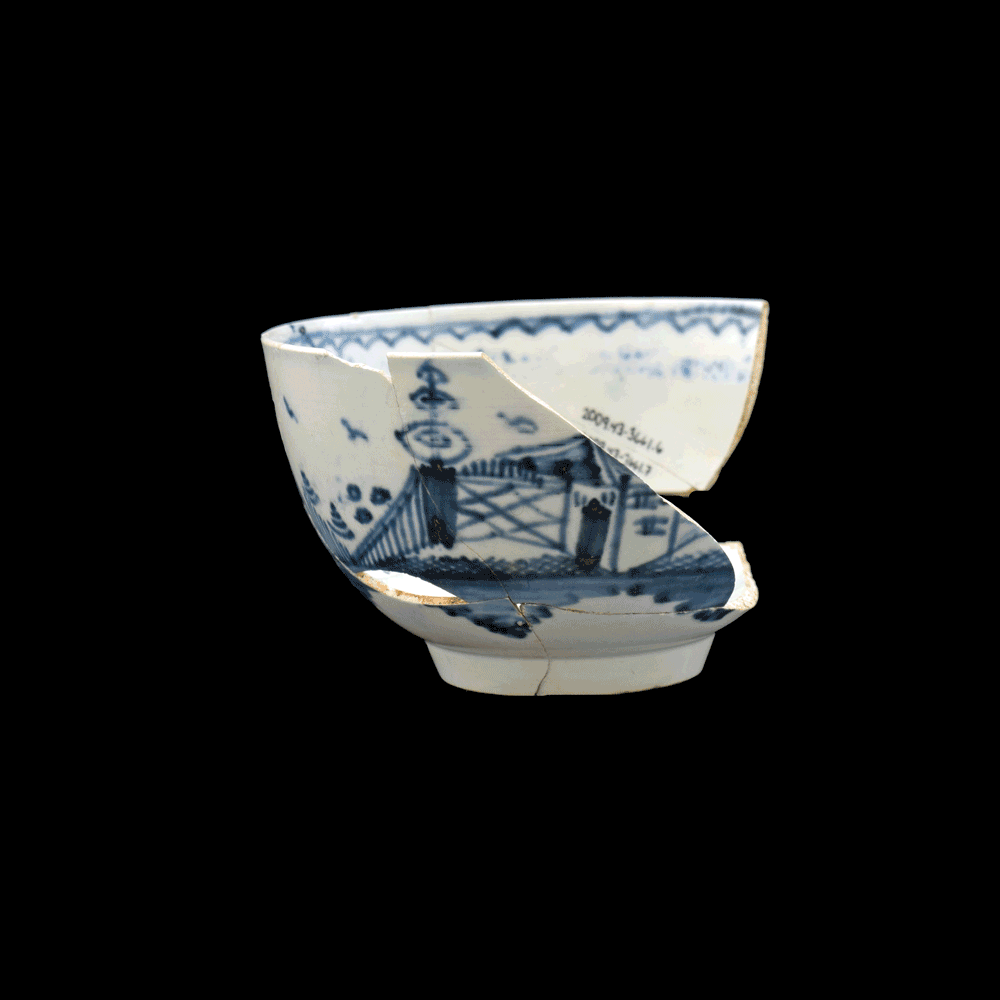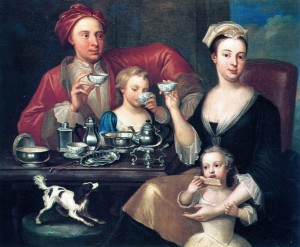Featured Fragment – Mended Pearlware Tea Bowl
By Kerry S. González
Several hundreds of years before tea was being consumed in the Americas (and even Britain), it was widely consumed in Asia. European traders residing in Asia during the seventeenth and eighteenth centuries adopted the habit of daily tea drinking, and tea quickly found its way to Britain. Starting in the late-seventeenth and early-eighteenth century, tea began to be defined as “a feminized drink.” Its role in defining the domestic sphere and the concept of womanhood grew stronger as the eighteenth and nineteenth centuries wore on (Gray 2013:25). The association became so close that, eventually, women were compared to china, and “china came to stand as a metaphor for virtue” (Gray 2013:28). This same ideology was brought to the Americas, where tea quickly became a beverage staple.
The importance of tea to early American households was highlighted at the Houston-LeCompt site in New Castle County, Delaware, a site investigated on behalf of Delaware Department of Transportation (DelDOT) and the Federal Highway Administration (FHWA). A total of 107 fragments of teacups, tea saucers, and teapots was recovered from the site, serving as an indication of its roll in daily consumption patterns. The time range associated with pearlware (circa 1775−1840), the most common type of teaware recovered (n=57), likely associates these artifacts with the Houston family occupation (1780s–1820).
Decorated pearlwares from the Houston-LeCompt site exhibited a range of designs, though blue decoration predominated in different decorative patterns. The Houstons likely purchased individual pieces rather than sets of pearlware to fill out their tea set. Prior to the mid-nineteenth century, pattern books that marketed pearlware to the mid-range market illustrated designs individually, rather than as sets. Only the most elaborate, and therefore expensive, designs were marketed as sets, primarily to the upper class, and research and the archaeological investigations have proven that the Houston’s were not upper-class citizens. While it was possible to put together matching sets, it does not appear that middle-class consumers regarded matching sets as essential.
The tea bowl recovered from the Houston-LeCompt site (pictured above) is an early type of pearlware known as China Glaze with cobalt hand painting in a Chinese House motif. It is similar to the tea bowl being used in a 1725 painting entitled “An English Family at Tea” by Joseph Van Aken (pictured below). Although not all fragments from this tea bowl were recovered during the dig, the mending completed by Dovetail’s archaeological lab illustrates the vessel’s form and decoration. The pattern is a direct imitation of more expensive porcelains of the period. While the Houstons may not have assembled matching sets or imported porcelains, they still aspired to a more refined and fashionable aesthetic.
Any distributions of blog content, including text or images, should reference this blog in full citation. Data contained herein is the property of Dovetail Cultural Resource Group and its affiliates.
References:
Gray, Annie
2013 ‘The Proud Air of an Unwilling Slave’: Tea, Women, and Domesticity, c. 1700–1900. Springer Publishing. New York, New York.


